Media | Articles
Mazda’s forgotten second-gen 929 was a luxury moonshot
If the original Miata was Mazda’s MGB, the second-generation 929 that the hit the scene in 1992 should have been its Jaguar XJ6. However, whereas the roadster’s fun appeal was universal and it suffered few direct rivals, the 929 was a serious luxury sedan with a plebeian-sounding name and looks that often passed for the Acura Legend, or perhaps Infiniti’s own XJ imitator, the J30.
The Mk2 929 sold poorly when new, and the slinky, tech-laden four-door remains a genuine curiosity today. “It’s the rarest car in my collection,” says owner Brandon Payne, whose Oregonian garage features two NA Miatas, a JDM FD RX-7 and a DeLorean. “It draws lots of interest, but most people have no idea what it is.”
The car is a relic of the irrational exuberance of 1980s Japan, part of the automaker’s doomed push into premium segments. From 1989 to 1991, Mazda’s brass in Hiroshima launched three new domestic-market labels (Autozam, Eunos, and ɛ̃fini) and dozens of cars to fill them, all before standing up its own Lexus rival, Amati. When Japan’s economy cratered in the early 1990s, all of these plans were thrown into chaos.

A sedan fit for a prince
Mazda applied the Sentia name to the 929 in Japan. Although it was not meant to be an Amati product, the Mk2 929’s rear-drive architecture was reported to underpin the planned Amati V-12 flagship (which ultimately died on the vine). Mazda took extreme pains to make the Sentia look and feel like a proper luxury machine, burning through 16 full-size mockups and almost ¥480M in design costs just on the exterior.
Former Mazda designer-turned-product-planner Pete Montero shed some light for us on the sheer scale of the Mk2 929’s development. In November of 1987, Montero and fellow ArtCenter College of Design graduate Avidor “Dori” Regev joined Mazda’s design staff in Japan—some of the first foreign designers to do so. There, a team led by veteran designer Shunji Tanaka was already knee-deep in creating the next iteration of the company’s flagship Luce sedan.
Marketplace
Buy and sell classics with confidence
“On our first day we toured the clay room and saw a series of stiff, boxy-looking sedan renderings and mockups.” The previous HC-series Luce, sold in the U.S. as the Mk1 929, had been a bland, boxy, and anonymous four-door sedan. To Montero’s eyes, these tall galleons were even worse.
“The idea was that the car should be fit for formal use by [Japanese] Crown Prince Akihito—which seemed far-fetched—so they had a roofline fit for top hats.” Montero and the other designers were polite but visibly surprised. “They were really struggling.”

Weeks later, Tanaka tasked Montero with creating an alternative 1/5th-scale Luce in clay. “[Tanaka] looked intimidating. He wore tinted sunglasses everywhere and dressed a bit like a Yakuza,” Montero relates, “But he was actually a nice and approachable mentor.” Tanaka gave him two weeks to work something up.
Drawing inspiration from the BMW E34 5 Series, Montero created a sleeker, lower design with a much longer dash-to-axle ratio and short front overhang. “Then the layout engineers came in and destroyed it, sticking pins in the places where hardpoints for the radiator, strut towers, and other bits had to go.”
Montero related what had happened to Tanaka and the elder designer shook his head, took a drag on his cigarette, and said, “So what do you want to do, Peter-san?” Montero defended his design, so Tanaka instructed him to execute one side of the clay his way, and the other to layout’s stricter demands.
Days later, the two versions were presented to executives. Montero printed out pictures of traditional rear-drive cars to emphasize that a low-slung rear-drive platform conveyed instant prestige in a way that a front-drive-based Audi 100 or Acura Legend could not. To hammer home the point, Montero showed a side-by-side comparison of his design alongside the Hyundai Excel, which drew an audible gasp.
“Mr. Fukuda, the head of Mazda design at the time, started laughing. Then the execs started arguing in Japanese. The meeting sort of ended and I was ushered out.”

The next day Tanaka approach him. “Peter-san, how are you this morning? Can you come with me?” Bracing for bad news, Montero entered the clay room surprised to witness modelers reworking the existing models to alter the proportions according to his vision. “They’re giving you what you like, Peter.” The entire platform was changed in the name of style, with the front wheels moved 90 mm forward and the rears 50 mm back.
Although Montero helped lay out the Sentia’s basic proportions, the soft, rounded-off exterior was mostly the work of Regev, who also penned the FD RX-7’s spoilers. The car’s elegant looks won acclaim at home, where it was also (briefly) sold as the ɛ̃fini (pronounced an-fini) MS-9, but by the time of the 1992 launch Regev had already departed the company to run a design firm in his native Israel.
Not only was it longer and lower, the Sentia was also wider than the original 1986–91 929/Luce, which ran it afoul of Japanese tax regulations. (It was meant to be a luxury car.)
Befitting such a machine, the Sentia bristled with technology. The 200-hp, 3.0-liter V-6 engine used variable-length intake manifolds. Four-wheel steering (4WS), dual airbags, and anti-lock brakes were standard. An optional solar panel in the roof powered a fan that cooled the car down while it was parked on hot days—a primordial version of today’s EV “preconditioning.” CD changers and a premium sound system were the order of the day on the audio front.
929: The stateside Sentia falters
Wearing the same 929 name as it did in its first generation, the car arrived in America in the late fall of 1991, just in time for cracks to begin to show in Mazda’s ambitious expansion plans. As Japan’s economy cooled, the company was left with an armada of cars planned for an entirely different financial forecast.
The new Mk2 929 got good reviews, with the press often focusing on the curvy styling, though there were some brickbats.
Despite weight-saving tricks, it was 300 pounds heavier than the similarly-sized Legend but had less power (U.S. models had 195 hp against the Acura’s 200). It was also big and not all that spacious inside. The trunk in particular was small, a concession to structure of the four-wheel steering system that was not even offered in the U.S.
The 929 faced an uphill battle on other fronts too, according to Montero, who returned to Mazda’s offices in Irvine as a product planner in 1989. First, the stretched and lowered second-generation Acura Legend for 1991 improved upon the “tallish front-drive sedan” look of the original effort. Unfortunately for Mazda, the Sentia/929 team had considered its car’s superior rear-drive-based design as a potential opening to conquest sales. The revised Legend had similar proportions to the 929 but hit the market a year earlier, wearing the still-fresh Acura brand name to boot. Mazda could claim no such premium equity. The Lexus GS and Infiniti J30 then arrived in late 1992, further squeezing the 929.
Logistical problems were even more dire. Mazda had trouble supporting all of the new models it had created for expansion, and its American dealers weren’t necessarily prepared to sell them.
“After its near-death experience in the 1970s, Mazda depended on dual franchise dealerships. Dealers often had other brands, and most just wanted to sell GLCs and 626s,” Montero says. They recognized the value of RX-7s and Miatas, but not so much the 929, and they weren’t really prepared for luxury buyers.
In 1991 and 1992, largely on the strength of exports, Mazda sold more than 43,000 Sentias and 929s in Japan and North America, but that number sank to just 9560 by 1994. The car quietly disappeared from U.S. showrooms at the end of 1995.
Rediscovery … and redemption?
It was at one of those reluctant dealers that owner Brandon Payne laid eyes on the 929, in person, for the first time. The year was 1993. “We sent formal letters to businesses as a writing exercise for school. Of course, I wrote mine to a Mazda dealer,” Payne says. “In response, they invited me to see the cars!” On the backlot was a car he’d only seen up to that point in pictures.
Payne recounts that the salesperson actually thought the car was a 626 until he insisted they go look at it. “Oh, you’re right, it is a 929!” she said. Payne was smitten but as the years wore doubted he’d ever get to own one. 929s weren’t common when new, and the herd of survivors thinned in the 2000s as the cars’ maintenance and repair costs began to add up.

He’d all but written off the possibility of ever owning one until 2015, when an elderly family decided to give up driving and get rid of the Mazda they bought from new—a 1993 929. Payne was happy to take the car off his hands and get it show-worthy. Since then it’s been a loyal friend and done a few multi-state drives, including a trip to the Hoover Dam.
“It’s a great cruiser,” Payne says. “It isn’t meant or excitement; it’s meant to eat up miles in quiet, silent comfort.”
Repairs, however, can be tricky. “There are lots of unobtanium parts, and while this isn’t a Bentley, it’s still a high-tech luxury car. It’s not necessarily easy to maintain,” he says. Payne recounts that replacing the valve cover gaskets proved a multi-day odyssey thanks to the variable-length intake runners and all of the wires and hoses in the way.
It’s a palatable price to pay. Thirty years later, with the weight of branding no longer really mattering, the 929 can be appreciated for the ambitious luxury machine it was. Payne says lots of people comment on the car’s good looks, which were never seen in the metal often enough to become overly familiar. “For lots of people, they’re seeing something new and exciting.”
Though the 929 is long gone, Mazda hasn’t given up its premium aspirations. The automaker has been pushing further and further upmarket across its driver-focused lineup, improving interiors and adding turbo engines to everything from the 3 compact to the three-row CX-9. With a proper rear-wheel-drive platform and inline-six engine in the pipeline, however, we’ll have to see if Hiroshima’s long-held luxury aspirations can finally come to fruition.
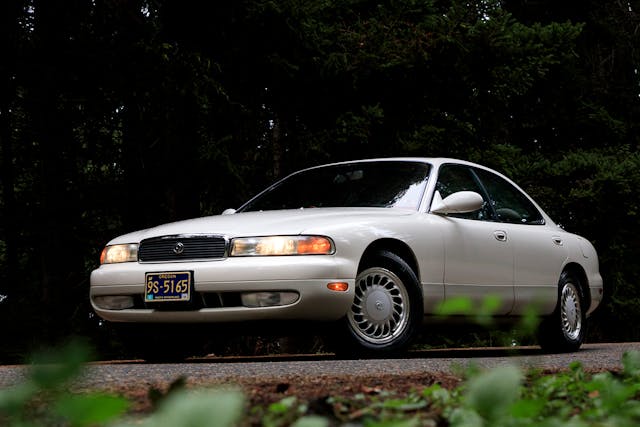



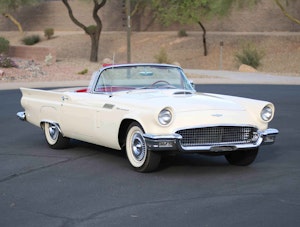
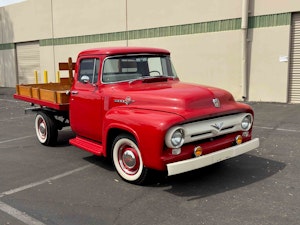



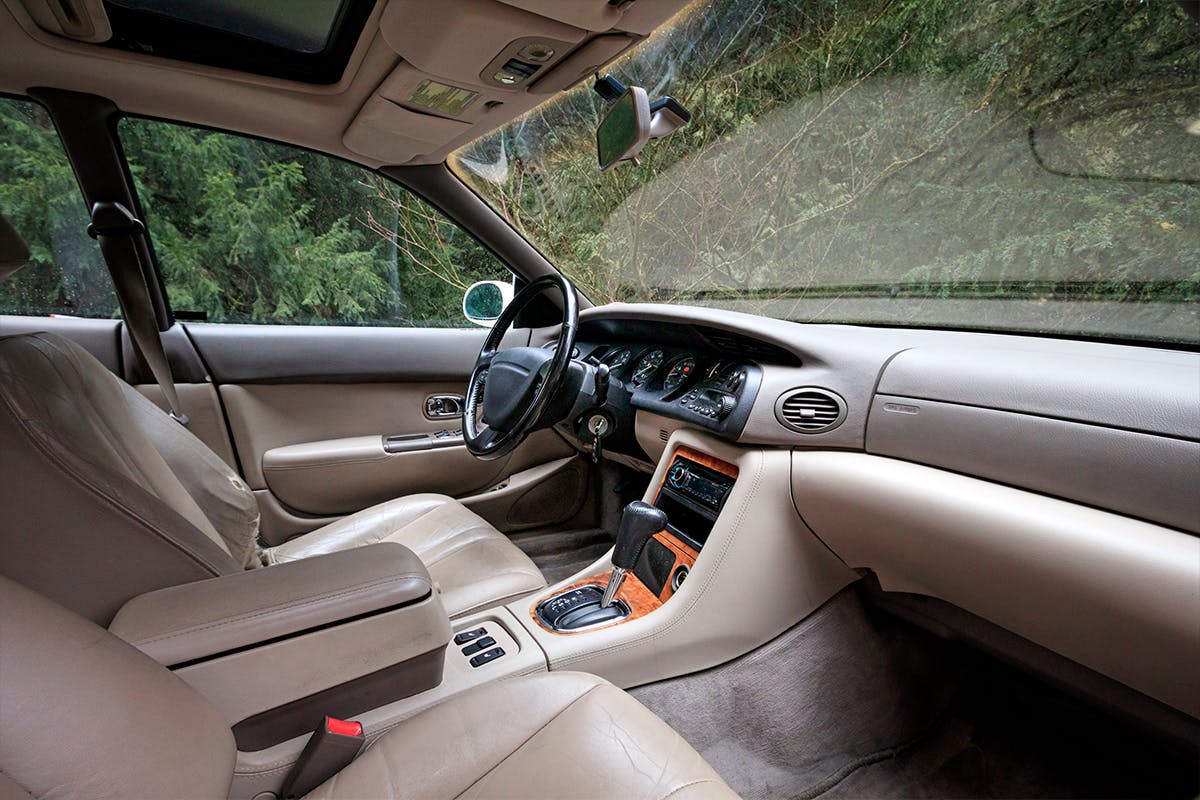
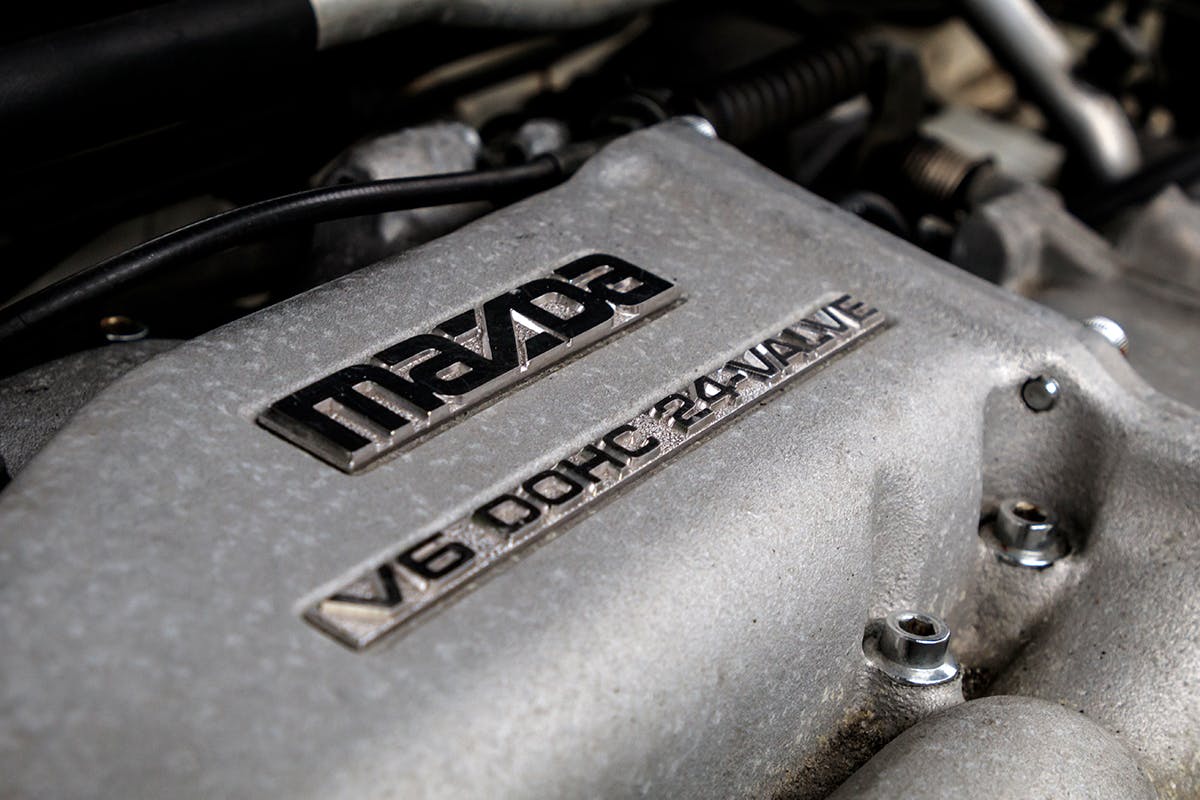
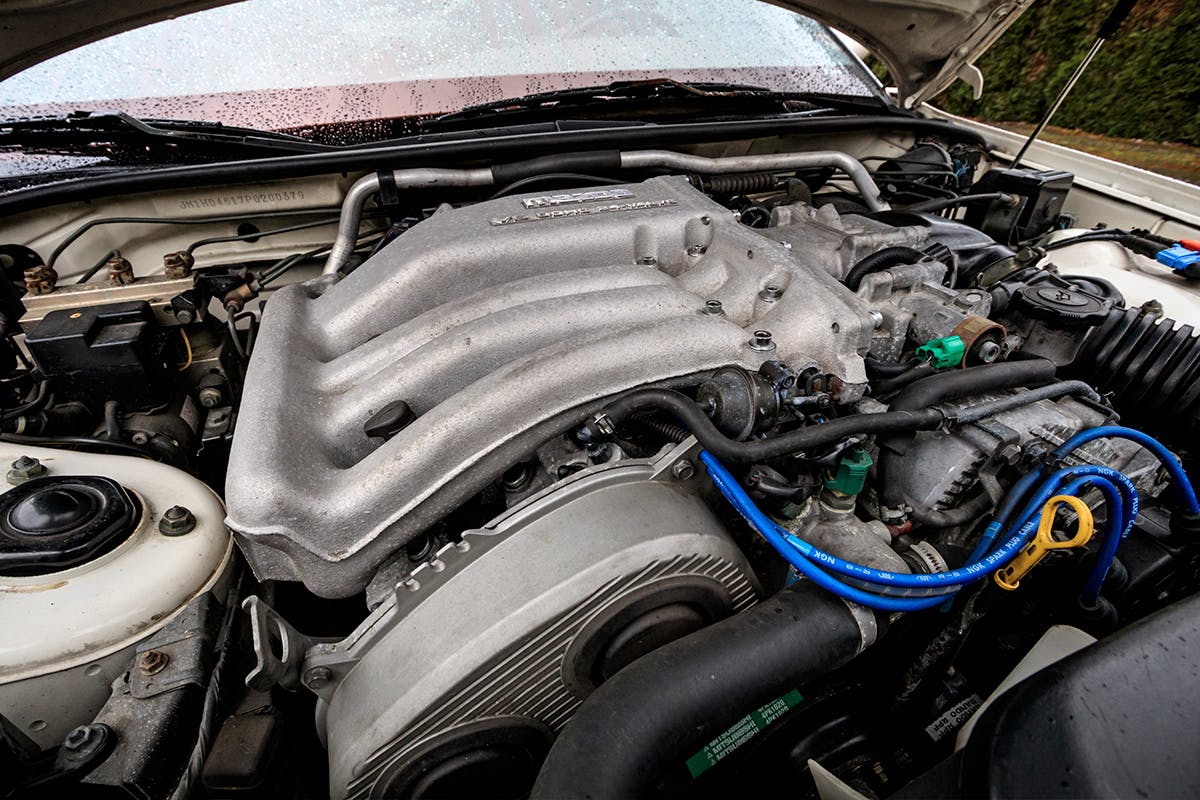
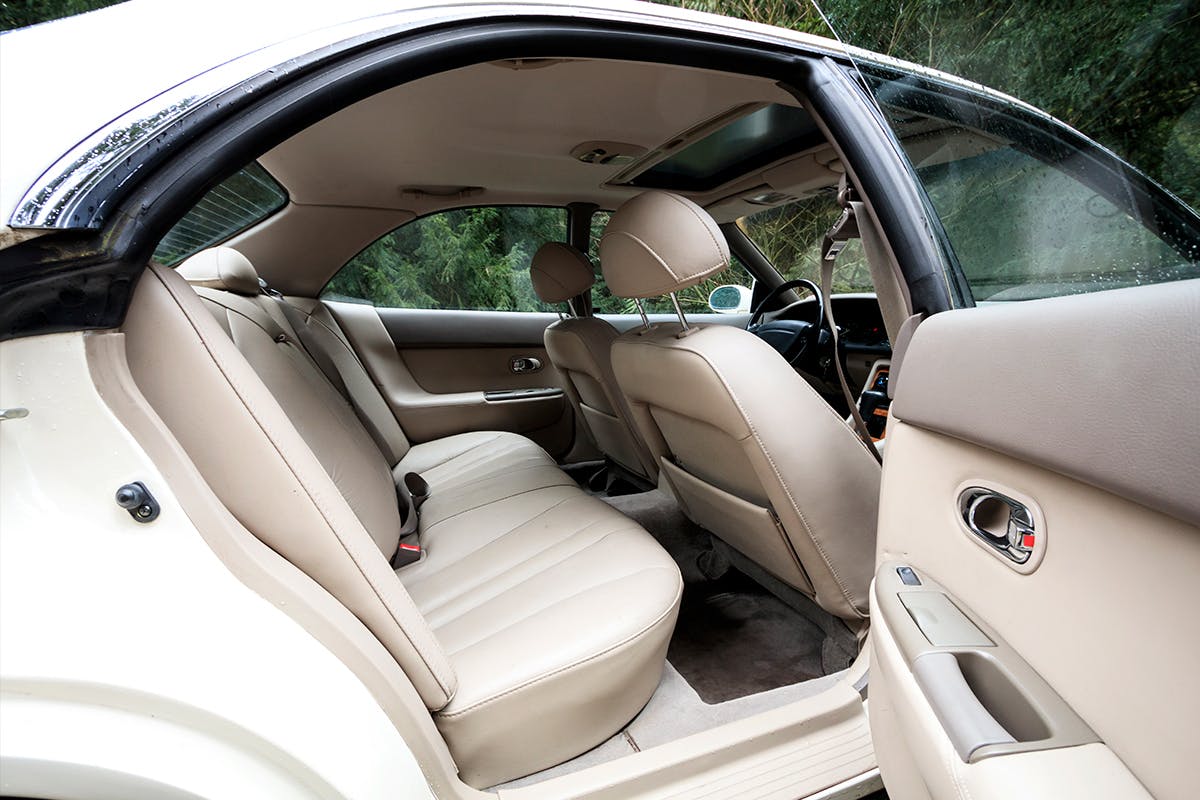
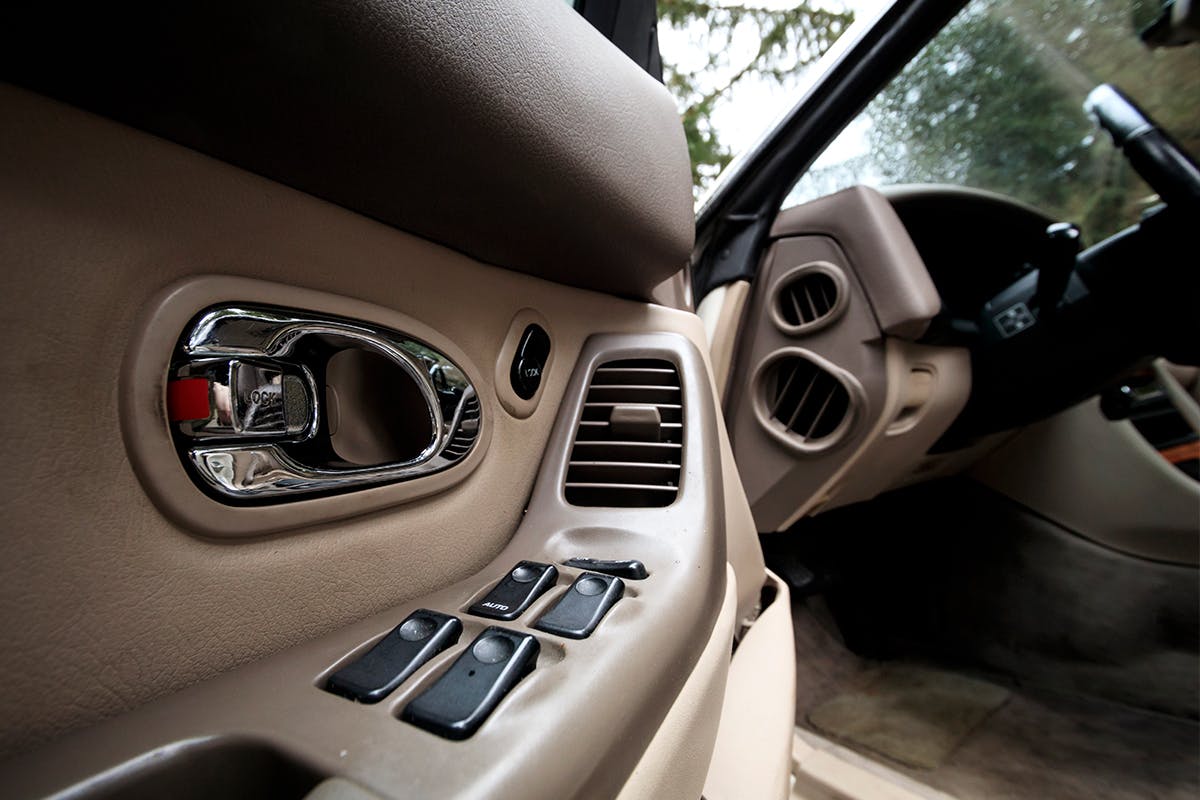
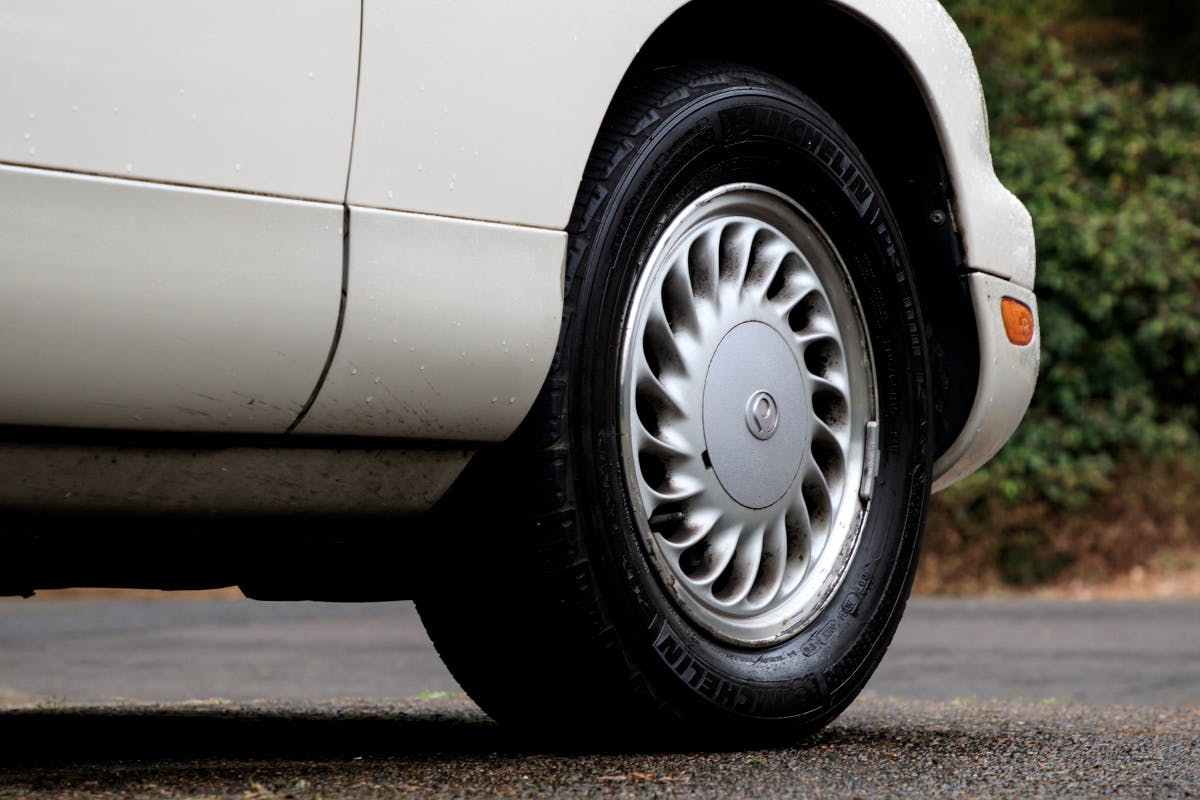
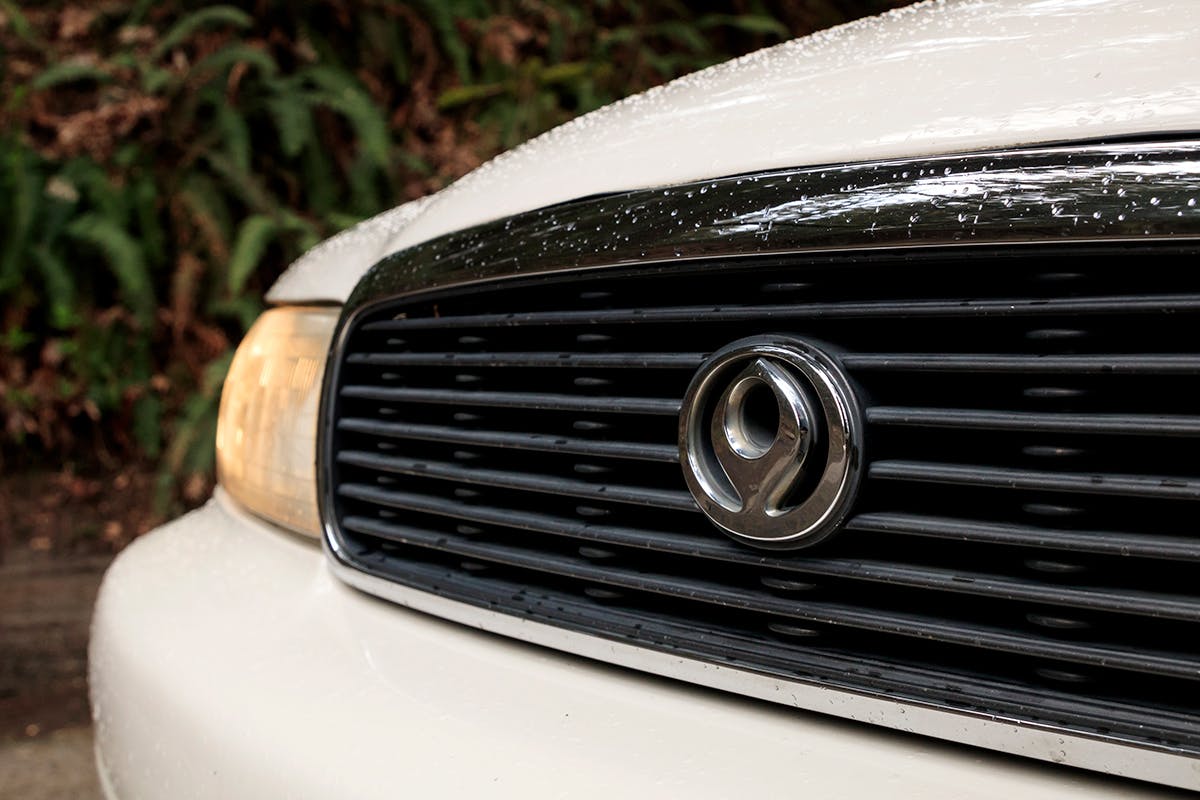
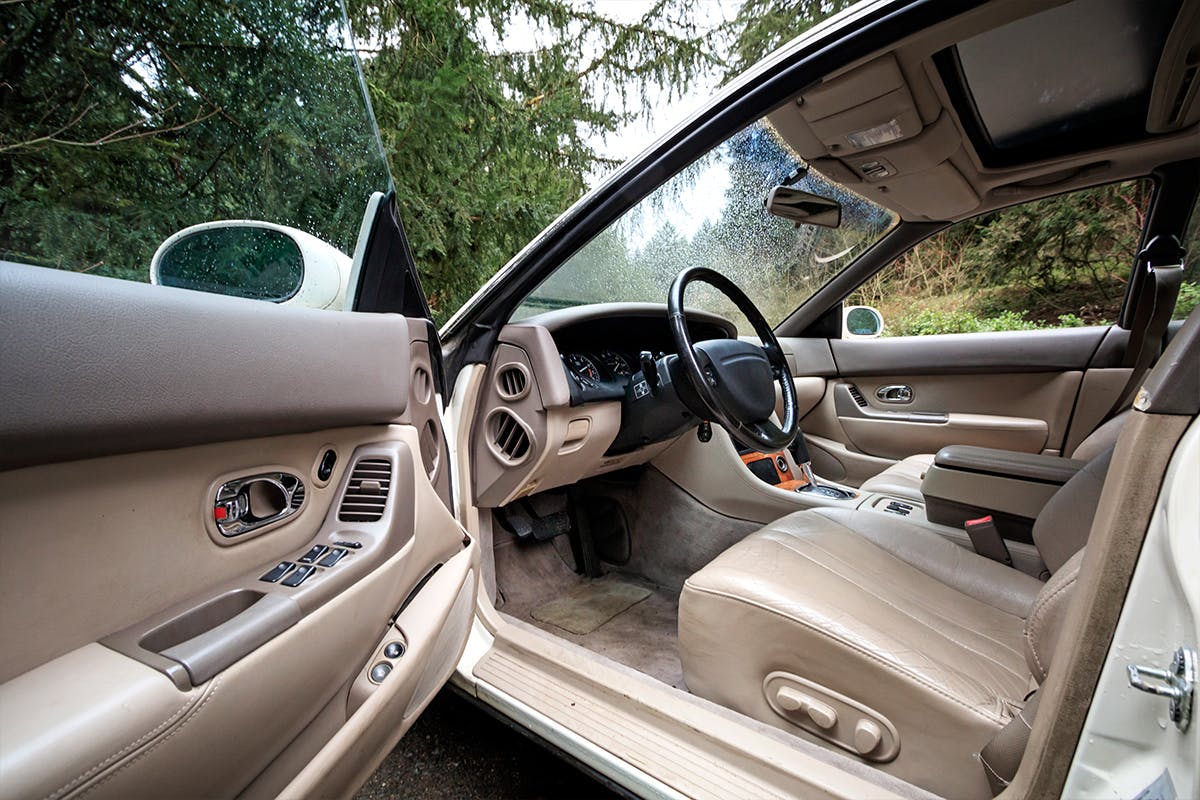

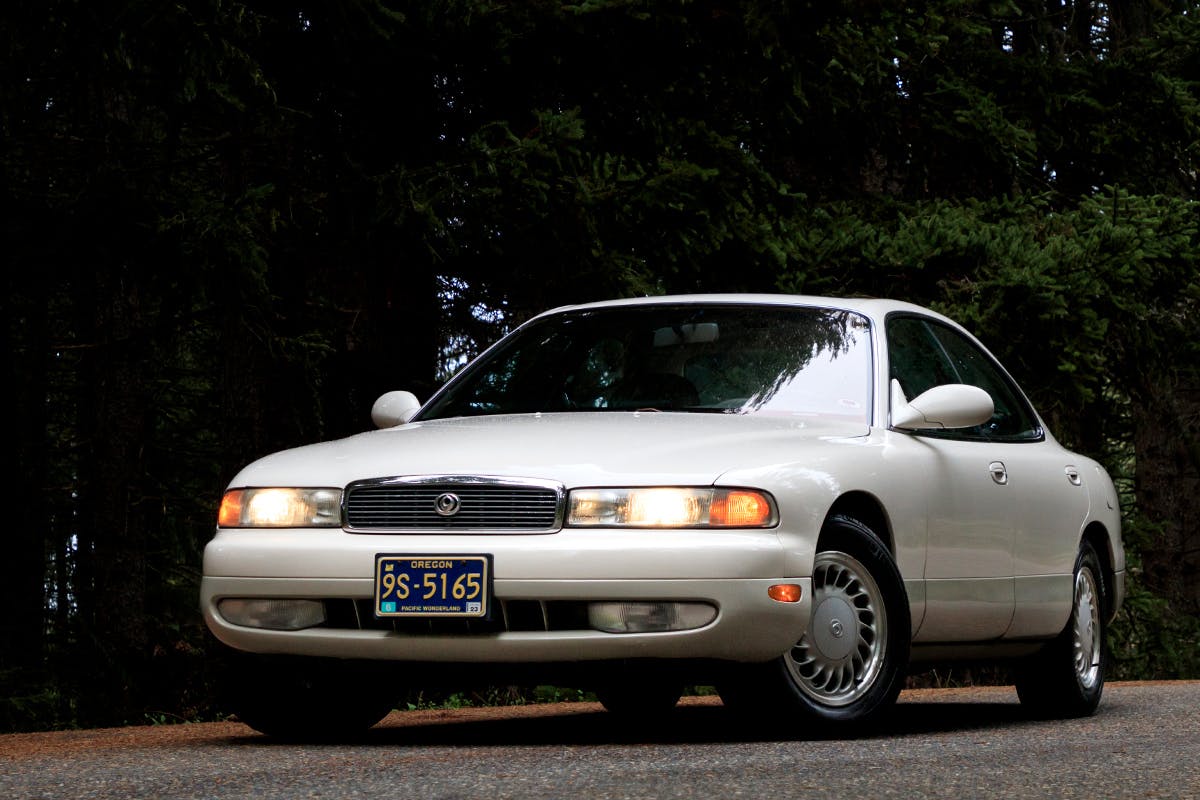
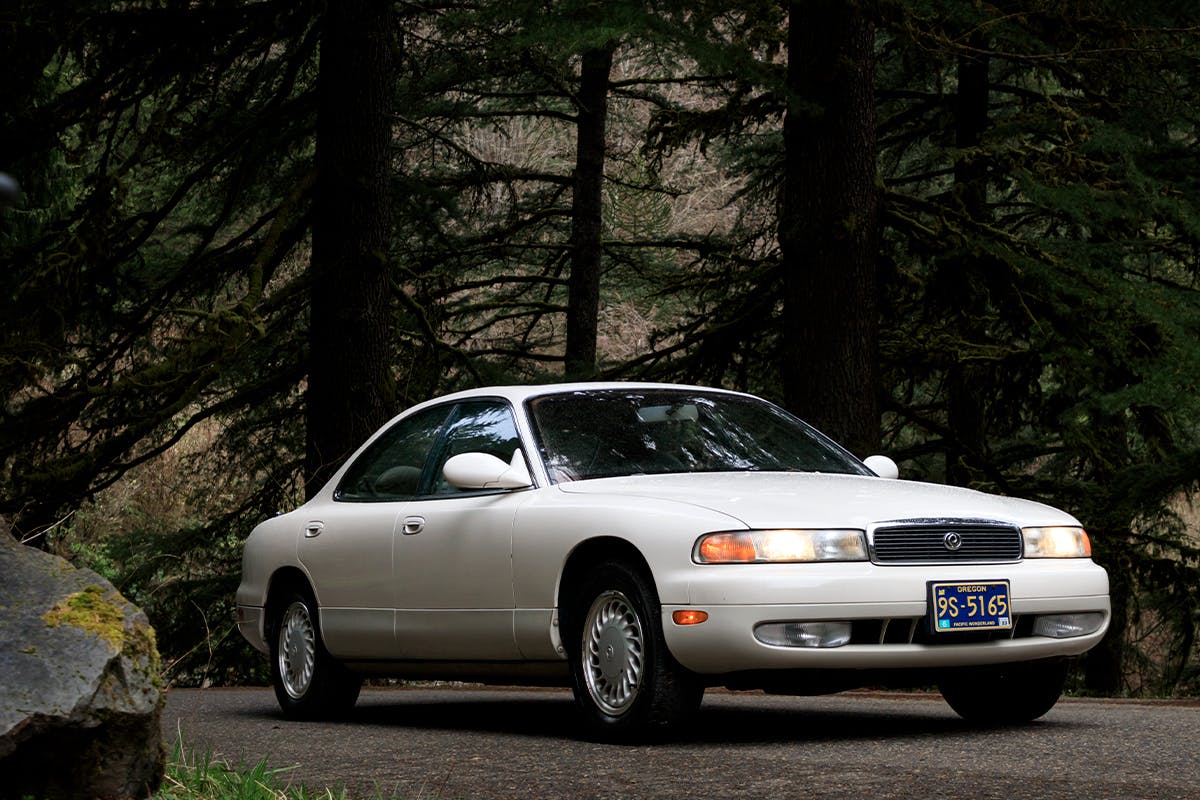
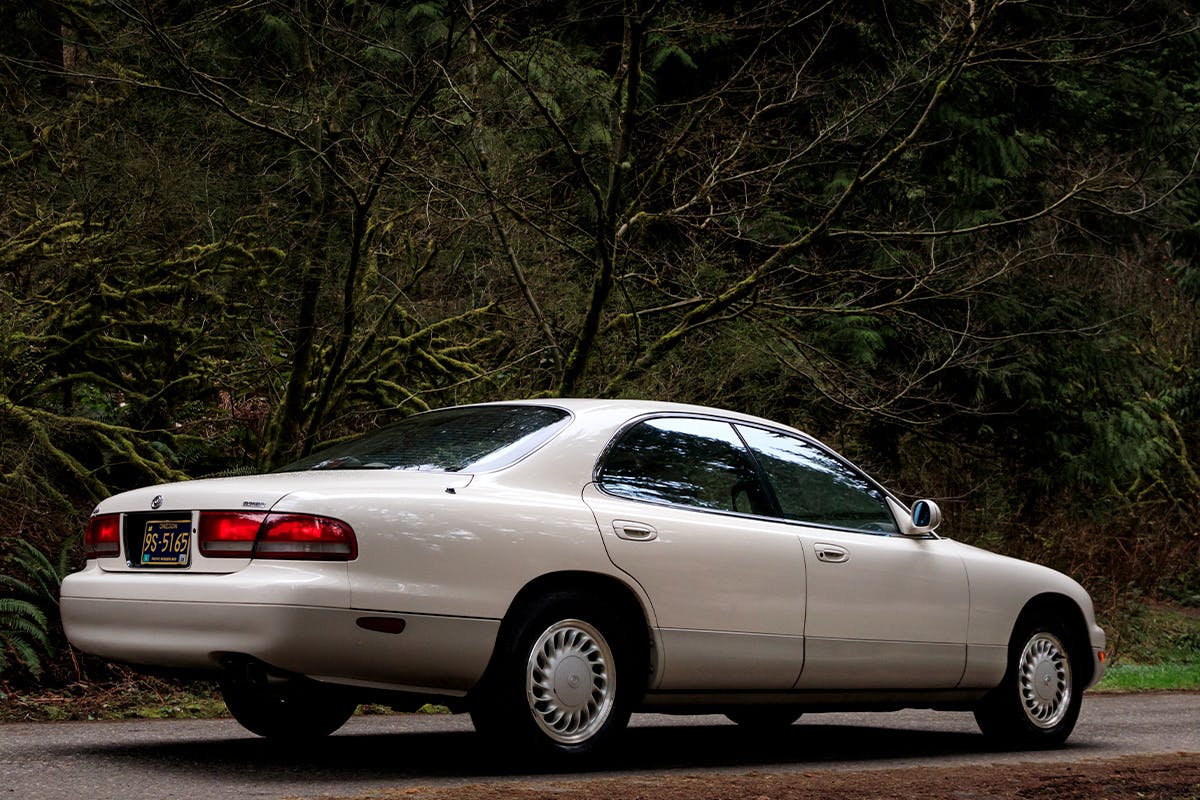
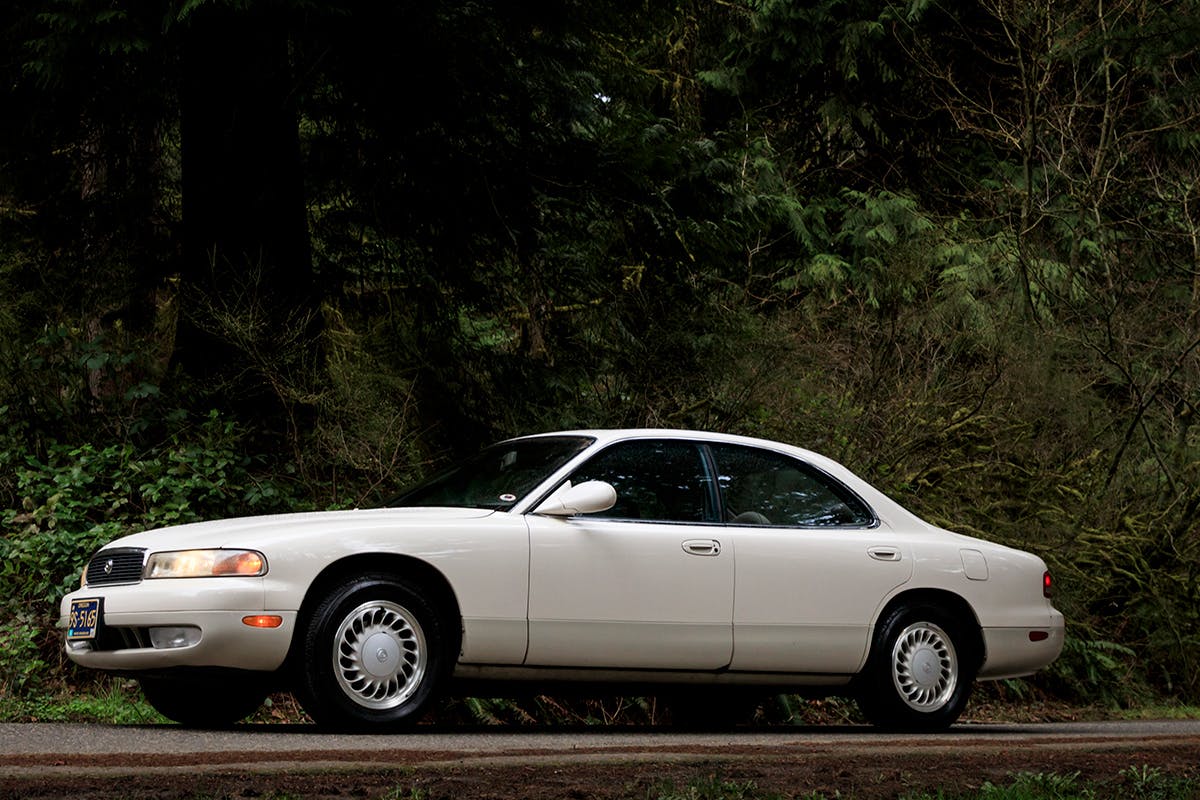















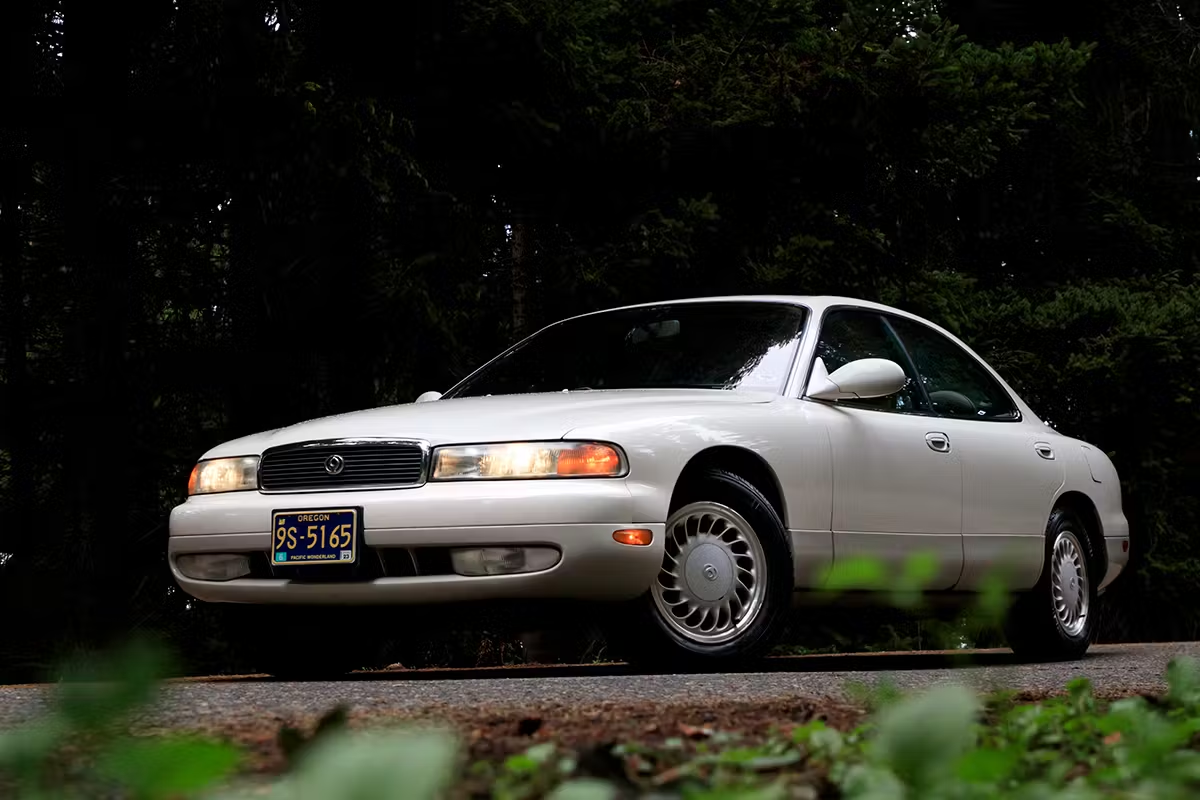
Truly elegant design. Saw just 2 or 3 in Europe over 30 years of my life
I was 16 in 1992 and obsessed with this car; I never thought a sedan could be more modern and elegant. My mom had a XJ6 but it’s unreliability broke her heart. I saw this as an opportunity and within year my plan had worked—I got to drive a midnight blue 1993 929 to both junior and senior year proms; I remember a crowd of fawning peers—no joke! She drove it for 10 years before trading it. She’s now rocking a Genesis G80 5.0. We’ve always been fans of the underdogs! I often search the US for these still, but it’s futile.
There’s a fantastic one on Bring A Trailer right now. I believe it has 3 days to go. I enjoyed your comment here, and thought you’d be interested.
We had a 929, can’t remember the year. It was the nicest car I ever had. I even loved it more than my Lexus RX 350. I regret selling that car and still think of it to this day.
I used to have a 929 Mazda it was a nice car. I am looking forward to buy a new one soon.
I am so delighted to find this article, because I had two 929’s – one purchased in 1990, known in Australia as The (29 HC, and the 929 Luce HC in Japan. It was a Mercedes look-alike, and happily and serenely gobbled up the miles between Melbourne and Sydney several times.
Then in 1992 I changed it for the sleek 929 HD or Mazda Sentia. The four-wheel-steering was a real boon for parking in tight city spots. I loved it, and did many miles over three years. In 1996 I considered trading it in for the Eunos 800 equivalent, but the Eunos dealership were dismayed by the 100,000km on its clock. So instead I went for a BMW 328 then.
Both 929’s were amazing, and real talking points in my street. Rarity and beauty – I now wish that I had kept them.
I had a Mazda 929- 4ws in Brisbane, same as the photo above. If I am not mistaken I think it was designed by Jaguar. I loved it, but my wife would not drive it being concerned about its size. Then one day she had no choice but to drive it….that evening she handed me the keys of her brand new BMW and I never got my Mazda back. She drove it for years and refused to part with it until she had no choice and ironically she traded it against a Eunos 800.
Excelente